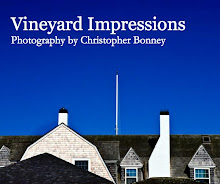
Big Sky, 2008
I learned that it was all over when the ship stopped in Algeciras. We were carrying oil from the Middle East to New York. The company mail pouch from the States carried a brown envelope containing the final divorce papers from my lawyer in Newport News. Signed and sealed by the Honorable Walton Tait of the General District Court of Eastern Virginia.
When you spend nine months of the year at sea, holding a marriage together isn't easy unless your wife is a very independent sort. I thought Joyce was, and she is. The problem turned out to be something else.
I knew we were a long shot to begin with. We met four years ago when the Cape Deloris put into the shipyard in Newport News for an unscheduled turbine repair. The repairs went slower than expected and I had nine days to kill in Virginia.
Joyce worked for the bank that handled our company’s financial dealings in Virginia. I fell for her immediately. I took her to Olive Garden for dinner that first day and never went back to the ship until the repair was finished and we were ready to sail.
I should probably mention that I have a bad history with marriage. There were three before Joyce. Jackie came first. Marrying her was just plain stupid. I’ll admit it. I thought Sue would be better. But she couldn’t stand us living apart so much. I wouldn’t quit and find a job ashore. That was that.
I waited a while before Melanie. Thought I was being smarter, that I’d learned from my earlier mistakes. But that woman turned out to have more loose screws than a hardware store. I couldn’t deal with all her constant demands. When I left her to go back to sea I didn’t return.
When I met Joyce, Melanie and I were still married in the eyes of her bible thumping Pentecostal preacher father and the State of New Jersey. It took a while to get out of that. At one point I had two days to get off the ship in Boston, drive to New Jersey to get my stuff before Melanie put it out on the street, drive it all down to Virginia to store in Joyce’s garage and then get back to the ship in Boston.
I had a lot of confidence in Joyce. She’d been on her own for some time after a high school sweetheart turned out to be a cheat. She’d never worked any place but the bank, where she’d risen to the highest job anyone who never went past high school could get.
Our marriage was like a magnolia blossom. It came fast and was sweetly scented. But also like a magnolia blossom, it, too, was short-lived. In this I was truly caught off guard.
Joyce is nothing if not compulsively neat. Everything in her house is just so. You’d have thought she’d appreciate the attention I give my tools, some of which belonged to my Dad and Granddad before me. But one day when I was home from sea and had spent the whole morning sanding and repainting my wheel barrow she came storming out the front door of the house in a way that made it clear to me that our time was running short.
She was angry that I’d thought it would be okay to paint the wheelbarrow in the front yard. What would the neighbors think? This wasn’t some damned redneck neighborhood, you know, she said. Heck, I told her, I was right by the garage door where all my tools and supplies were. The garden hose was nearby so I could wash the rusty pieces down to the street. The driveway was out in the open, so the paint would dry quickly in the sun. It made perfect sense.
Or so you’d have thought. She knocked the wheelbarrow off the saw horse onto the lawn and said it was clear I loved my tools more than I love her. When I tried to make a joke and said, “But I love you more than buying life insurance,” it didn’t go over well.
Things got colder fast. I asked a guy I’d met down the street if he knew of a good lawyer. I started the proceedings before my break was over. Then I moved all my stuff to a storage unit up on Jefferson Avenue near the airport and went back to sea. I haven’t been back since.
Joyce didn’t fight me on the divorce. I half think she was glad to see me out of her house. I’d thought we had a chance. But I tell you, some women just don’t understand how important taking care of tools is to guys.


























